Spotlight on Billy Hunt
May 7, 2013
Originally published 06/09/2013

INTRODUCTION:
How many people do you remember meeting for the first time? Well I remember the first time I met Billy Hunt. I was in Charlottesville, Va. working on a story about a women's arm wrestling league for NPR. It was the league's first national championship match. Billy, who starts his professional bio with the sentence, "Billy Hunt considers himself to be one of the top 5 fake women’s arm wrestling documentarians in the history of humankind," was there, of course. He had been working for years on a documentary about the league. And me? I was just a women's arm wrestling documentary tourist.
So I was incredibly nervous about meeting Billy and his documentary partner. On the big night I knew we'd all be together in a mosh pit of a crowd, fighting for position. I introduced myself and explained what I was up to. I was nauseatingly submissive about it all. "Dude!" cried Billy, probably pushing his giant coke-bottle glasses up his nose or wiping his shaggy brown hair out of his eyes, "It's totally cool! Look man, the worst outcome isn't if I get mediocre pictures - it's if you hate me afterward."
I couldn't—and still don't, really—believe it.
And it all went great. We both got good pictures. We shared gear. We had fun. And now we've become friends.
Billy Hunt is smart and goofy. He has charisma coming out of his earholes. His most successful project is his most recent one: it's a device he made out of an old karaoke machine - a device he calls TheScreamotron3000 - that will take your picture if you scream loud enough to trigger the shutter release. Yes, really. It's been insanely popular. So I was surprised at how wonderfully somber, even dark, his interview was for this blog post. I was expecting this to be a fun chat, albeit one with some probing 'portrait psychology talk.' But what Billy offered was something else entirely. And something way better. He offered a look into the mind and heart of a freelance photographer who seems successful from the outside but still feels like he's stumbling about somewhat aimlessly in a totally rearranged media landscape. Maybe you can relate. I sure can.
(The following interview took place over Gmail chat and has been edited for clarity and content.)
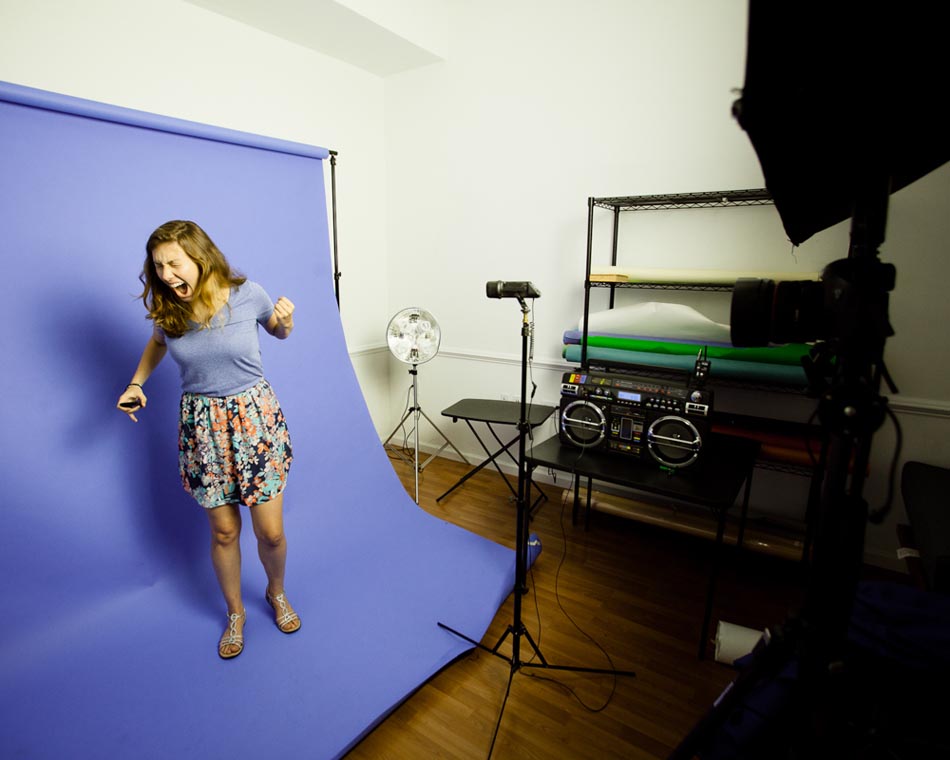

TID:
You didn't use just any old camera to take these pictures. What did you use and why did you use it ?
Billy:
So The Screamotron3000 is really a Rube Goldberg-type device that takes a picture when you scream. [It] hooks into my Canon DSLR. I made it because I wanted a way to break through the natural barriers people put up when they are getting photographed. Everyone has a version of themselves they want to present to the world. Most of the time, unless you are a model or actor, that version looks pretty terrible. I wanted to create a way to try and push through that veneer into something more "real." I used a boombox because boomboxes are awesome, obviously. I could just have easily just asked people to scream for the camera, and taken the picture. But it wouldn't have been as cool. The machine gives people an excuse to emote, without confrontation. It's fascinating. I am developing an iphone app that will do the same thing.
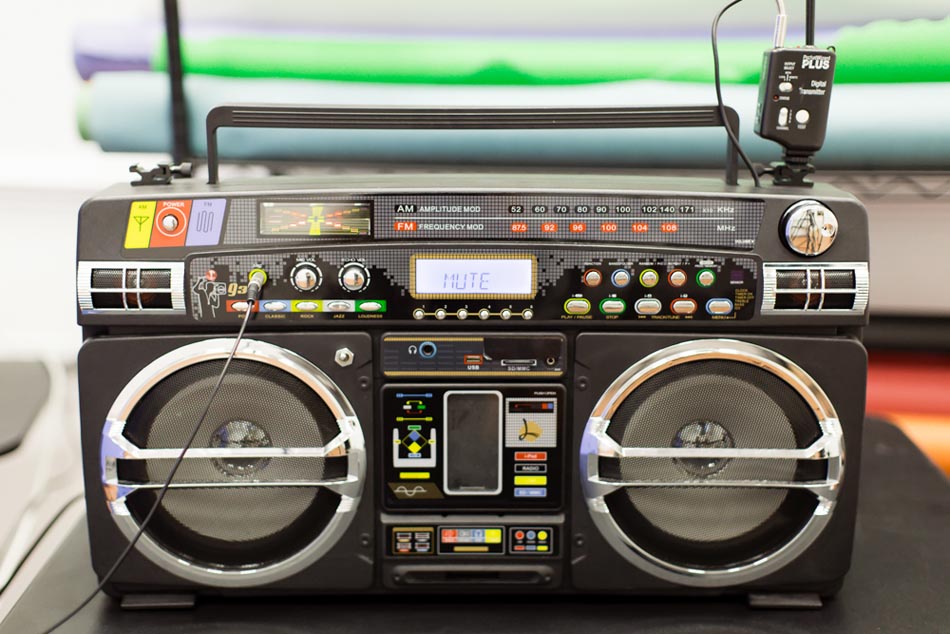
TID:
OK, so clearly this is a hit. I mean, if you're going to the trouble to develop an app and all (which is awesome, by the way). Where have the photos been published?
Billy:
I had no idea it would be so popular. When I was showing the Screamotron3000 out at Review Santa Fe last year, the kitchen staff started hearing screaming coming from the next room. They wandered over and everyone on the staff came and screamed. They were around art all the time, but this was the first time they had something they could participate in. I find that very gratifying. This thing is not just for artsy fartsy people like myself. It works for everyone.
As to where it has been, I was on Wired's Raw File first, then the Huffington Post, NPR, a bunch of photo and buzz blogs, and then the Today Show. People have flown me around the country and screamed for this goofy machine.
TID:
I love it. Now, let's talk about the pictures. I asked you to select some images that had interesting backstories to them. Let's start with the picture of the white woman who's a little older - tell us about her.

Billy:
That woman was in the kitchen staff at Review Santa Fe. She killed it. She brought her husband in to do it too, both of them were amazing.
In the early photos, I was very directive, stoking the flame. It was nuts. Very intense. Nowadays I am a lot less directive. I like to see what people come up with on their own. I am a focal point for their anger if they like, but I like to watch people go on their own journey. Everyone screams different, it's always interesting. Generally, women more often go down or sometimes up, guys go forward a lot. My main challenge is trying to guess which way a person will go in the frame. Sometime I feel like a soccer goalie. Women and children are much louder then men, by the way. I don't know if its the higher registers, some weird evolutionary thing, or they have more to scream about. I have to make the machine more sensitive for men .
TID:
That's interesting.
Billy:
There's on photo of a woman flipping me off. That was an early one, and when I realized I was onto something interesting. She started saying all this crazy shit. Cursing me out, accusing me of things. I barely primed the pump, and out comes all this stuff. It was so cool. Draining, but cool.
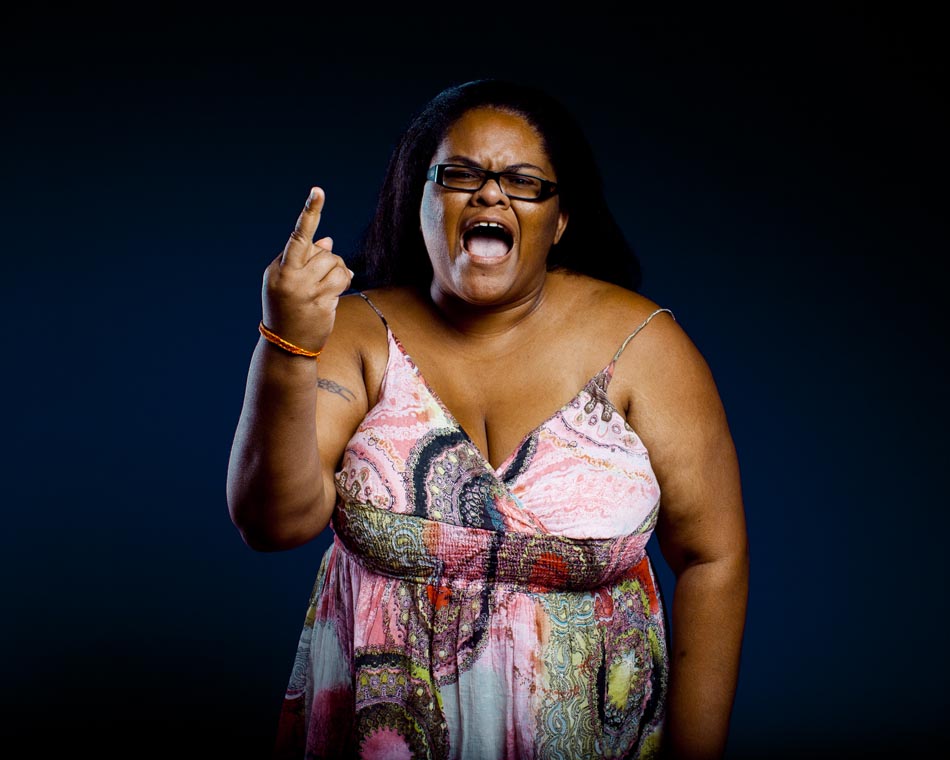
TID:
Whoa. Did it scare you, or did you think 'This is amazing!' Or both?
Billy:
Both, completely both. I really was not expecting that. I don't know what I was expecting really. Not that. I guess I never really realized what so many people are carrying inside them. I mean, I know I am, but lots of people have a lot of pent up shit in them. I sort of think people have a lot of energy built up in them, and need a release to get to a place of peace. Almost everyone says they feel better after doing it. Many liken it to therapy. I think it's good to lose yourself in anything from time to time. America has this view of itself as free, but I don't really believe that. There is tremendous pressure to conform in our society. And creating a space to act outside of the norm can't help but be useful. All I know is that every single person who has posed for a scream portrait has said it helped, and they felt better.
TID:
Do you think on some subconscious level you might have known that we all have this friggin' hurricane inside of us and this could bring it out of them?
Billy:
Yeah, the project definitely came out of my bad photo shoot experiences. Getting photographed is such an artificial experience, and very intimidating. I sort of wanted a way to short circuit that process. I think people take good photos when they are a little off balance.
TID:
So what was this black lady saying to you? What was she screaming? And by the way, how the hell do you advertise these sessions to find your subjects?
Billy:
Shit, there is a line out the door every time. People love it. I just post on Facebook, and it blows up. In the early versions, I would mostly do it in my studio, one on one, with everyone else waiting outside. Now that it's gotten bigger, I have done it at events. And the interesting thing is, it draws a crowd of people to watch. It's weird hearing someone belt it out and then a mess of golf claps when they are done. Who knew screaming was a spectator sport?
TID:
So tell me about the session with this woman flipping the bird.
Billy:
She was probably one of the first ones in my town [Charlottesville] to do it. She brought a friend (which lots of people do), and I think they started screaming at each other. So, there is a big ass line of people out of my studio, and she comes in. I remember I forgot to wear earplugs, so I put my fingers in my ears. And she just starts laying into me. "Fuck you! You never Loved Me! Don't I mean anything to you?" For a second, I wondered if I had wronged her and forgot about it. Then I was a little afraid, then excited that I could capture and capitalize on her pain, then embarrassed that I am a vulture.
The thing I love about this thing, is that it really works for everyone. All types of ages, cultures, everything. I mean, who's sick of seeing photos of white rich people or poor Africans? Me.
TID:
Holy shit, I think this may be my favorite paragraph in the history of the English language. Did it come out who exactly she was yelling at?
Billy:
Nope.
TID:
REALLY??
Billy:
She was yelling at me.
TID:
Wow.
Billy:
Isn't the mystery more interesting?
For me it is. I mean, if she told me, I would put my own spin on it. My own experiences. I like that we came together, had our own thing, and then went apart. It 's like a tragic romance.
TID:
Tell me a little about the other shots. Why did you pick each of them?
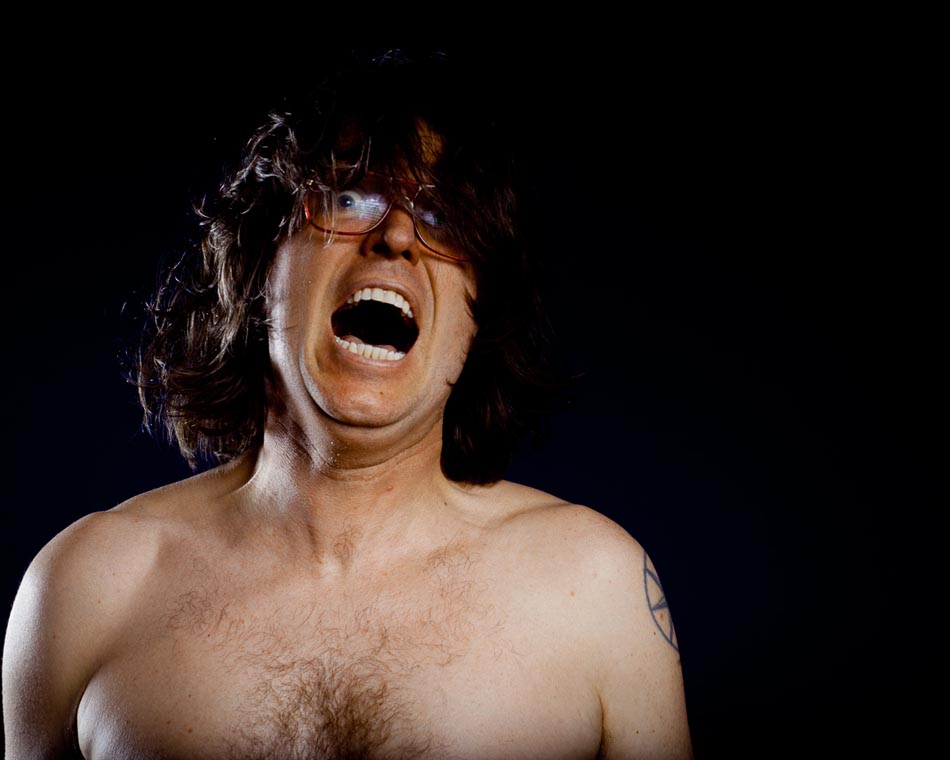
Billy:
The first one is me. It took a long time for me to be able to scream well for the camera, I am too in the weeds on the process to let go at all.

The second is my son. He is an amazing screamer, and always gives a good picture.

The third one was so cool in that he ripped his clothes off for the camera. I am so self-contained, I wish I could let go enough to explode for the camera like that. I envy him a little. The next one I like because she is the prettiest screamer I have ever seen.

I think that's very hard to do.
TID:
OK, so tell me about this sequence. Were you "helping" at all or is this just the kid on his own? And what do we learn about the process from looking at these?
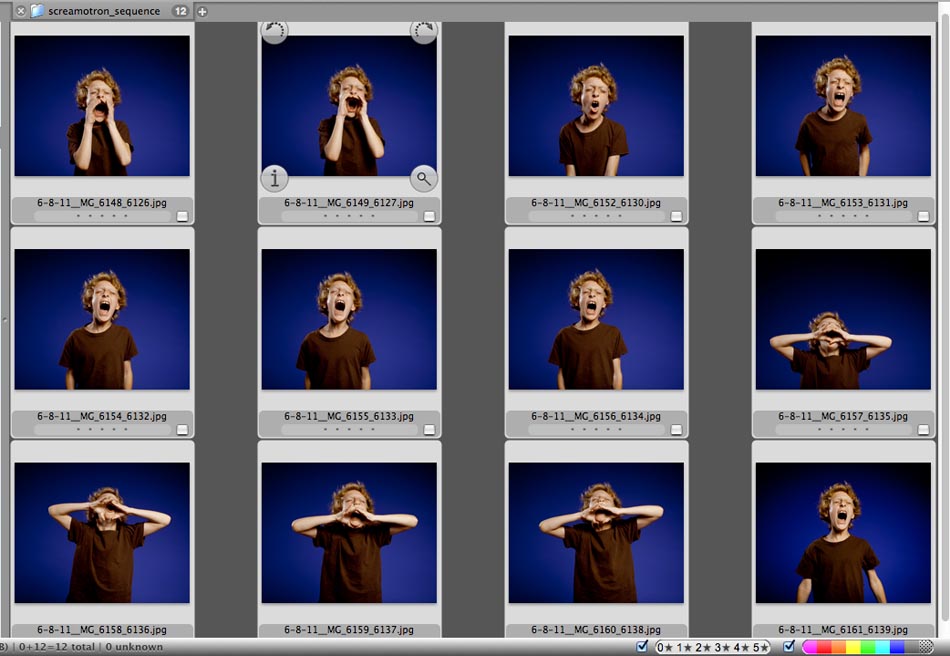
Billy:
It was also an early one, and I just let the kid keep trying. Some people love doing it, and want to keep going. I encourage this. People do get better at it if they practice, like anything. The reason I picked the one I did—a lot of the images can be soft, because people are moving a lot, which can create motion blur and depth of field issues. So I immediately threw these out. Of the ones that are left, my pick is this one.
I chose it because I think it was the simplest. The most transcendent.
TID:
OK, last question: I know that even though you've produced this killer project and the pictures have been published all over the damn place, that photography is still a real struggle for you, both from a financial perspective and from a personal "I'm ready to throw in the towel on this" perspective. I think if we're being honest, that comes as no surprise to most of us photographers, but people so rarely talk about it. Are you kind of like "Hey, wait, why didn't making something so popular solve more of my problems?"
Billy:
I think photography is in a very interesting time. There used to be a lot of technical hurdles to being a photographer, you had to do math to figure out flash exposure and carry around a light meter and whatnot. All these problems are going away. The tech of photography is the least interesting part. Telling a story, having moments of shared connection, making something beautiful. That is photography at its best.
The downside is, I think the industry of photography is in freefall. Almost every photographer I know is broke. From the Anne Leibovitzs down to small fry such as myself. The only ones I know of that make money have made it into a factory. They are churning out high volume of weddings or portraits or whatever, quickly and in large volume. That was never my thing. I like to take time and work on it until I am (mostly) satisfied. I think that style of photography is harder to do now, because there are so many of us. There are over 300 professional or semi-professional photographers in my small college town. That’s nuts! 300 people chasing maybe 5 jobs a day. Eugene Richards once told me that photography is becoming like poetry. No poet expects to make a living at it, and they don't measure their success by how much dough they make. For the world, I think this is a good thing. But for a working professional, to be in a world where everyone wants to be an artist and no one wants to buy art, its a death knell. The truth is, we are in a revolution, and in revolutions there are winners and losers. My personal opinion is old guard professional photographers like myself are going to be losers, but that doesn't mean the revolution shouldn't happen.
TID:
You said that "all the photogs you know are broke." Do you mean freelance photographers? Because I know plenty of pretty well-off photographers with staff jobs.
Billy:
There are photographers who have good jobs, just like there are lottery winners. I consider them a statistical anomaly.
The main thing that the successful people I know have in common is tenaciousness. They keep swinging at the plate. I probably start 6 projects a year, and finish 2 or 3. Some will hit, others won't. It doesn't mean I shouldn't try, or that the ones that are successful are better then the others. I heard Ben Affleck speak recently, and he talked about getting turned down for 95% of what he auditions for. And that’s Ben-fricking-Affleck. He's way hotter then me.
TID:
You are definitely one of my favorite humans of all time, Billy Hunt. Thank you.
:::BIO:::
Billy Hunt considers himself to be one of the top 5 fake women’s arm wrestling documentarians in the history of humankind. He also takes pictures of people screaming. Well, he lets a machine do it for him. Clients include The Dave Matthews Band, Bust Magazine, Modern Luxury, The Washington Post, The Wall Street Journal, The New York Post, More Magazine, Virginia Living Magazine, Urban Ink, and a ton of cool bands, people, and businesses. Look out for his upcoming feature length documentary on the Collective of Lady Arm Wrestlers, “CLAW.”
You can see his website here:
TID NOTE:
This week's spotlight was conducted by Brad Horn, who is a video journalist at the Washington Post.
You can see his website here:
If you'd like to be a guest interviewer as well, please contact Ross Taylor at [email protected].